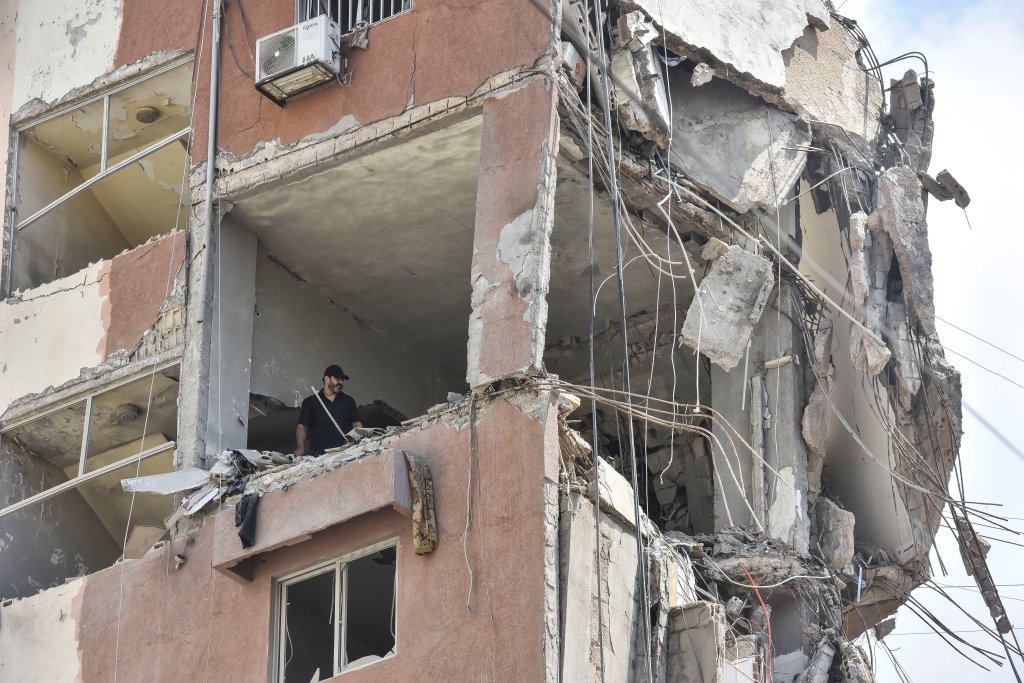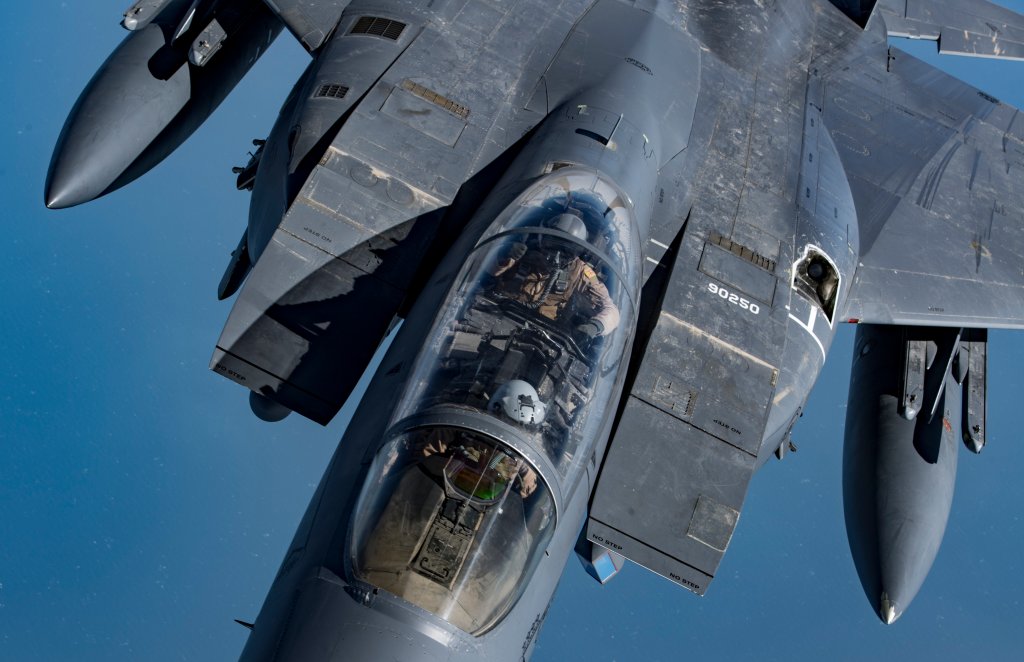The U.S. will send additional combat aircraft to the Middle East ahead of what is anticipated to be a large-scale attack by Iran and its proxies against Israel in retaliation for the assassination of Hamas leader Ismail Haniyeh in Tehran on Thursday, but just how long that may take in the face of what is said to be a looming Iranian military operation is unclear.
“How many planes to send is still being worked out, as are final approvals from senior officials including Defense Secretary Lloyd J. Austin III,” The New York Times reported. “Officials said they were seeking to calibrate the American response to send enough of the right types of aircraft as quickly as possible to help defend Israel without appearing to escalate the conflict.”
Friday afternoon, the Pentagon confirmed that it was sending additional assets to the Middle East and Europe. See our update at the bottom of this story.
A U.S. defense official confirmed to The War Zone that additional aircraft are being considered as part of an effort to protect U.S. and allied personnel.
“U.S. forces in the region are taking necessary measures to increase readiness and force protection,” the official said.

The Pentagon on Friday said there will be additional force protection measures in the region, but would not specify what those would be or when they will arrive.
In a conversation with Israeli Defense Minister Yoav Gallant on Friday, Austin promised the U.S. would support Israel in defending against looming threats from regional adversaries.
“The Secretary reiterated ironclad support for Israel’s security and informed the Minister of additional measures to include ongoing and future defensive force posture changes that the department will take to support the defense of Israel,” Deputy Pentagon Press Secretary Sabrina Singh told reporters, including from The War Zone.
Austin “highlighted that further escalation is not inevitable and that all countries in the region would benefit from a de-escalation in tensions, including through completing a Gaza cease-fire and hostage relief deal. He also stressed that the unprecedented scale of U.S. support for Israel since October 7 should leave Iran, Lebanese Hezbollah and other Iranian-backed terrorist groups, with no doubt about U.S. resolve.”
Just how the U.S. will bolster its presence in the region appears to be something that is still in the works.
“I’m not going to get ahead of any decisions that the Secretary has not made yet,” Singh said when asked if Austin has determined what additional U.S. assets will head to the region. Singh declined to confirm that additional combat aircraft are being deployed.
On Thursday, U.S. President Joe Biden “reaffirmed his commitment to Israel’s security against all threats from Iran, including its proxy terrorist groups Hamas, Hezbollah, and the Houthi,” according to a White House readout of his call with Israeli Prime Minister Benjamin Netanyahu. “The president discussed efforts to support Israel’s defense against threats, including against ballistic missiles and drones, to include new defensive U.S. military deployments.”
The call came after the assassination of Haniyeh that Israel has yet to acknowledge as well as one it said it carried out Tuesday on Hezbollah military commander Fuad Shakr in Beirut. That attack prompted Hezbollah’s leader, Sayyed Hassan Nasrallah, to also vow vengeance on Israel.

There is growing concern that the response from Iran and its proxies Hezbollah in Lebanon and the Houthis in Yemen could be far larger and more complex than Tehran’s previous attack on Israel. In April, Iran sent more than 300 drones and missiles toward Israel in retaliation for an Israeli strike on a consular building right next to the Iranian Embassy in Syria’s capital Damascus on April 1 that killed three top Islamic Revolutionary Guard Corps (IRGC) commanders.
U.S. and allied weapons played a major role in ensuring what the Israeli Defense Forces said was the destruction of 99% of those aerial threats, most before they could enter Israeli airspace.
U.S. Air Force F-15E Strike Eagles in particular were key to that effort. Forward-deployed F-15Es from units based at RAF Lakenheath in England and Seymour Johnson Air Force Base in North Carolina played an outsized role in shooting down more than 70 Iranian drones.

In addition to boosting the presence of U.S. combat aircraft in the region, the Pentagon has also gathered more than a dozen warships there, including the Theodore Roosevelt Carrier Strike Group and the Wasp Amphibious Ready Group (ARG), a three-ship amphibious task force that includes more than 4,000 Marines and sailors, The Washington Post reported.
The Roosevelt strike group is in the Gulf of Oman at the moment while the Wasp ARG is in the eastern Mediterranean, where it is always stationed. Singh told reporters that like previous aircraft carrier strike groups, the Roosevelt could move around the region as needed.
The six Arleigh Burke class guided missile destroyers said to be among those vessels have air defense systems that have already proven effective against missiles and drones launched by the Houthis in their ongoing campaign against Red Sea shipping.
Ships assigned to the USS Dwight D. Eisenhower‘s carrier strike group (IKECSG) fired 155 Standard-series missiles in operations against Iranian-backed Houthi militants based in Yemen during a recently concluded nine-month deployment, officials said last month. Aircraft from the strike group launched another 60 air-to-air missiles in the course of their operations in and around the Red Sea. Collectively, the IKECSG used its various weapons to destroy a bevy of Houthi aerial drones, missiles, uncrewed surface vessels and undersea vehicles, and different kinds of targets ashore.

During Iran’s April barrage on Israel, two ships in that class – the Arleigh Burke and the Carney – downed Iranian ballistic missiles with Standard Missile-3 (SM-3) anti-missile interceptors. That marked the first combat use of those weapons. You can read more about that in our initial report here.
The success of those engagements prompted Navy Secretary Carlos Del Toro to ask Congress for additional funding to purchase more.
“I truly believe that the SM-3s will be needed in greater numbers in the future, given the operations that took place in defense of Israel,” Del Toro testified during a House Armed Services subcommittee hearing in May. “Recently, some were fired. And very effectively. So I think given the future threat and our deterrence mission of the Indo-Pacific, we are going to need more SM-3s in the future.”
When it comes to projecting combat airpower in the Middle East, the Pentagon has several options, including sending long-range bombers from the U.S. as both a deterrence and contingency measure. In February, two B1-B Lancer bombers from Dyess Air Force Base took part in aerial strikes on Iranian-backed militias and IRGC-related targets in Syria and Iraq in retaliation for a drone attack that killed three U.S. soldiers in Jordan on Jan. 28.
There are several bases in the region hosting U.S. aircraft like Prince Sultan Air Base (PSAB) in Saudi Arabia and Al-Dafrah in the UAE, among others. USAF F-16C/Ds from Aviano Air Base in Italy are forward deployed to the region and have been flying in air-defense configurations.
F/A-18E/F Super Hornets and EA-18G Growlers are embarked aboard the Roosevelt. Getting additional fighter aircraft to the region, like Strike Eagles forward from Lakenheath, could take as long as two days, however. That, of course, is after the White House approves the plan.
While the Pentagon is in the process of preparing for a major Iranian-led operation against Israel, time may not be on its side. Iran could kick things off at any movement and moving fighter aircraft and other assets to the Middle East takes time, no matter how on alert units are to carry out their orders. There clearly is a race against the clock underway here that is being informed by intelligence products the U.S. and its allies are working from. Iran could exploit this reality, but time will only tell to what end.
Update: 6:01 PM Eastern –
Singh released a statement confirming additional assets will be heading to the Middle East:
“The Department of Defense continues to take steps to mitigate the possibility of regional escalation by Iran or Iran’s partners and proxies. Since the horrific Hamas attack on Israel on October 7, the Secretary of Defense has reiterated that the United States will protect our personnel and interests in the region, including our ironclad commitment to the defense of Israel.
To that end, Secretary Austin has ordered adjustments to U.S. military posture designed to improve U.S. force protection, to increase support for the defense of Israel, and to ensure the United States is prepared to respond to various contingencies.
To maintain a carrier strike group presence in the Middle East, the Secretary has ordered the USS Abraham Lincoln Carrier Strike Group to replace the USS Theodore Roosevelt Carrier Strike Group, currently on deployment in the Central Command area of responsibility.
Additionally, Secretary Austin has ordered additional ballistic missile defense-capable cruisers and destroyers to the U.S. European Command and U.S. Central Command regions. The Department is also taking steps to increase our readiness to deploy additional land-based ballistic missile defense.
The Secretary has also ordered the deployment of an additional fighter squadron to the Middle East, reinforcing our defensive air support capability.
These posture adjustments add to the broad range of capabilities the U.S. military maintains in the region, including the USS Wasp Amphibious Ready Group / Marine Expeditionary Unit (ARG/MEU) operating in the Eastern Mediterranean.
As we have demonstrated since October and again in April, the United States’ global defense is dynamic and the Department of Defense retains the capability to deploy on short notice to meet evolving national security threats. The United States also remains intently focused on de-escalating tensions in the region and pushing for a ceasefire as part of a hostage deal to bring the hostages home and end the war in Gaza.”
Update: 8:21 PM Eastern –
Iran is making a big show of preparing for a looming battle with Israel.
“In coming hours, the world will witness extraordinary scenes and very important developments,” Iranian media is reporting
Iranian media also began rebroadcasting the Iran-Iraq war anthem, reportedly a reference to the state of alarm there.
Contact the author: howard@thewarzone.com

